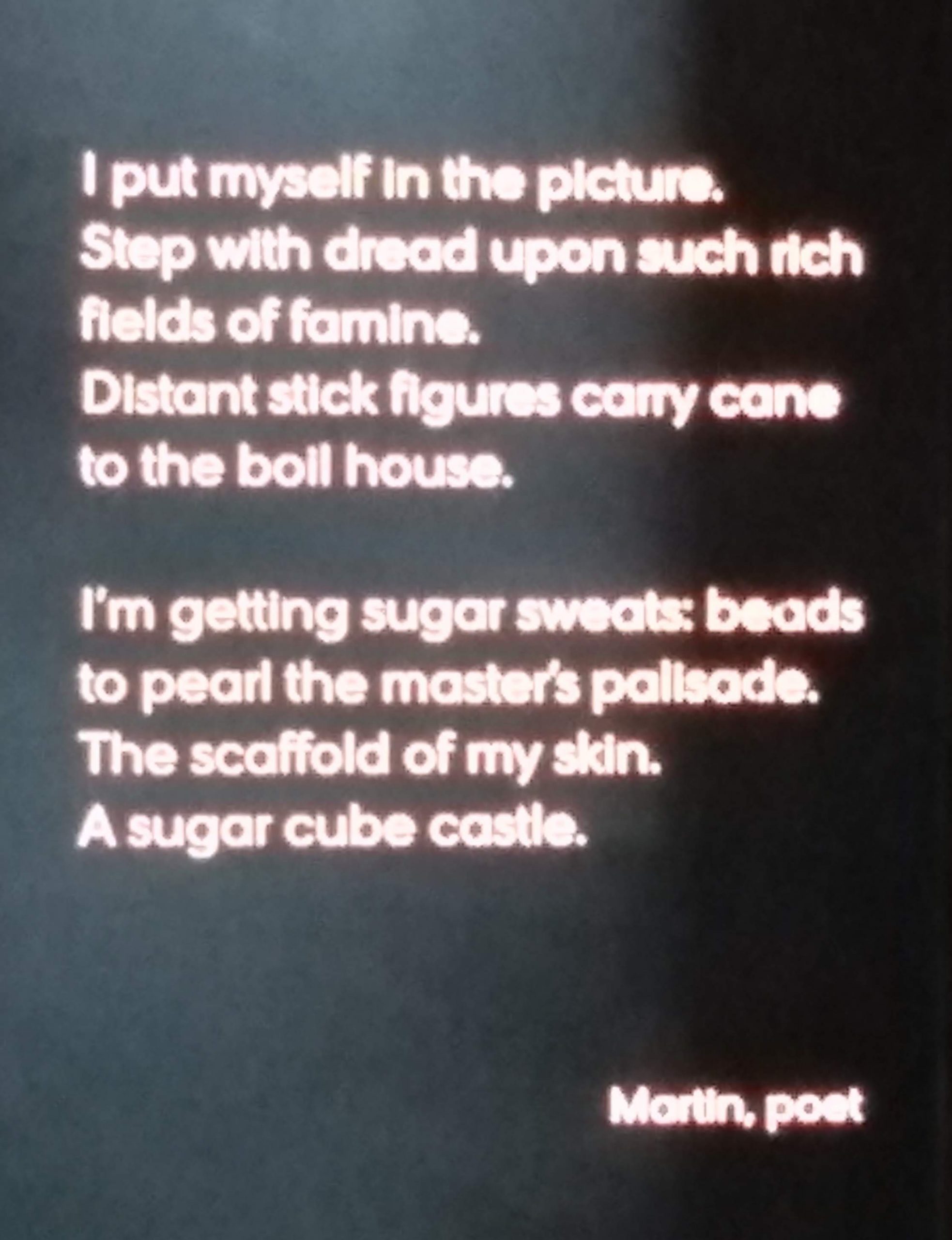I recently visited Penrhyn Castle in North Wales. This neo-Norman castle has an interior more akin to a Victorian stately home: gilt-framed paintings mounted on patterned wallpaper, heavy curtains framing stained-glass windows, elaborately carved oak woodwork everywhere, on pillars and archways and ceilings. It was the very definition of opulence and grandeur.
The unfortunate truth, though, is that this castle was built with wealth that came from the slave trade. The Pennant family - the original owners of the estate - owned a large sugar plantation in Jamaica, and it was the funds from this that enabled them to create such a luxurious home for themselves.
The National Trust now owns Penrhyn Castle, and has installed a fascinating exhibition exploring the house's colonial ties in an honest and very poignant way. They collaborated with children from a local primary school, who selected objects from around the house with particularly intriguing back-stories and links to the slave trade, and these were spot-lit next to information boards that you could see as you walked around the different rooms. This was interesting, but the bit that really fascinated me (as a Word Wolf...) was the poetry.
The children had written poems about Penrhyn's history, in collaboration with some professional poets. All of them were insightful and moving, but there was one, written by poet Martin Daws, that I found particularly clever. It was displayed on a spot-lit board next to a painting of a sugar plantation, which you can see at the top of this post.
I put myself in the picture.
Step with dread upon such rich
fields of famine.
Distant stick figures carry cane
to the boil houses.
I'm getting sugar sweats: beads
to pearl the master's palisade.
The scaffold of my skin.
A sugar cube castle.

What I love about Martin's poem is its use of layered meaning - double meanings, and images that work on more than one level. To be honest, that's what I love about poetry in general, but this one does it particularly well.
'Rich fields' has a double meaning. It alludes to the fertility of the fields, first of all, but it is also undeniably pointing out that this business is lucrative, and that it is making the Pennants rich. 'Rich fields of famine', then, is almost oxymoronic. The contrast between the ideas of richness and famine, which are both inextricably linked to this field, points out that while the slave trade boosts the wealth of some, it heightens the poverty of others.
'Distant stick figures' is another image that works on multiple levels. Firstly, it is an allusion to what the figures look like on the painting - there they are literally distant stick figures. But this is a troubling metaphor, because the 'stick figures' are actually people, with lives and feelings and rights. It is a dehumanising image comparing these human beings to drawings, and it serves as a reminder of two things. Firstly, that the work they are doing is dehumanising and strips them of their human rights. Secondly, that all too often they are thought of as just drawings, not real people. This links to 'distant' - they are geographically far away, and also far removed from people's minds. The Pennant family did not think about the true cruelty of the slave trade - the plight of these distant workers did not bother them. That is why we are now being encouraged to 'put [ourselves] in the picture'. And there is yet another facet to the metaphor: a stick figure is thin, skeletal, angular. Due to the famine and the poor working conditions, so were these people. It's such clever writing, communicating so much meaning through only three words.
'Sugar sweats', again, can be interpreted in more than one way. Is it referencing the sweat of the slaves as they labour for hours? Perhaps. Or is it hinting at the guilt and discomfort we feel now, as we look upon this brutal history and how such business was once accepted as the norm?
'Beads' is clever. Placed on the same line as 'sweats', it becomes part of that clichéd metaphor 'beads of sweat.' But despite its placement on the page, it is actually connected to the phrase on the next line: 'beads to pearl the master's palisade.' Now we see its second meaning: more like 'pearl', it represents the ostentatious riches the Pennants gain. The reader is shown that, for these slaves, the metaphor 'beads of sweat' is all too real; their labour directly translates to jewels for the master.
This idea is built upon in the final two lines. 'The scaffold of my skin' is a metaphor with racial undertones - because it was the African people, who had a different skin colour, who were being exploited. 'Scaffold' illustrates that it is these people who are holding up and supporting this castle. 'Sugar cube castle' echoes this, showing that the sugar plantation has built Penrhyn. And when you think about the contrast between these two images, even more meaning can be found. Not only are the two different in colour - the skin of the slaves was black, and the sugar cube castle is white, highlighting again the terrible injustice of the racism - but there is a marked difference in strength between a scaffold and a tower of sugar cubes. A scaffold is of far greater structural integrity, which points out that although the 'sugar cube castle' looks grandiose and spectacular, it is not actually as worthy of respect and admiration as it might seem. The enslaved people are the ones who deserve the respect and admiration, and who have demonstrated a far greater strength than the lavish castle ever could.
